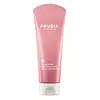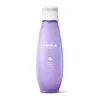What's inside
What's inside
 Key Ingredients
Key Ingredients

 Benefits
Benefits

 Concerns
Concerns

 Ingredients Side-by-side
Ingredients Side-by-side

Water
Skin ConditioningAmmonium Lauryl Sulfate
CleansingAmmonium Laureth Sulfate
CleansingCocamidopropyl Betaine
CleansingAcrylates/Vinyl Neodecanoate Crosspolymer
Emulsion StabilisingSodium Chloride
MaskingPotassium Hydroxide
BufferingBetaine
HumectantErythritol
HumectantCitrus Iyo Peel Extract
HumectantTitanium Dioxide
Cosmetic ColorantButylene Glycol
HumectantSodium Amps
Hexylene Glycol
EmulsifyingPassiflora Edulis Fruit Extract
Skin ConditioningOleth-10
EmulsifyingPolysorbate 60
EmulsifyingBeta-Glucan
Skin ConditioningSilica
AbrasiveTriethoxycaprylylsilane
Sodium Hyaluronate
HumectantTetrasodium Glutamate Diacetate
Honey Extract
HumectantEthylhexylglycerin
Skin ConditioningDisodium EDTA
Chlorphenesin
AntimicrobialLinalool
PerfumingLimonene
PerfumingBenzyl Benzoate
AntimicrobialHexyl Cinnamal
PerfumingWater, Ammonium Lauryl Sulfate, Ammonium Laureth Sulfate, Cocamidopropyl Betaine, Acrylates/Vinyl Neodecanoate Crosspolymer, Sodium Chloride, Potassium Hydroxide, Betaine, Erythritol, Citrus Iyo Peel Extract, Titanium Dioxide, Butylene Glycol, Sodium Amps, Hexylene Glycol, Passiflora Edulis Fruit Extract, Oleth-10, Polysorbate 60, Beta-Glucan, Silica, Triethoxycaprylylsilane, Sodium Hyaluronate, Tetrasodium Glutamate Diacetate, Honey Extract, Ethylhexylglycerin, Disodium EDTA, Chlorphenesin, Linalool, Limonene, Benzyl Benzoate, Hexyl Cinnamal
Vaccinium Angustifolium Fruit Extract 88%
Skin ProtectingButylene Glycol
HumectantGlycereth-26
Humectant1,2-Hexanediol
Skin ConditioningPanthenol
Skin ConditioningDiethoxyethyl Succinate
SolventBetaine
HumectantPEG-60 Hydrogenated Castor Oil
EmulsifyingPhenoxyethanol
PreservativeAmmonium Acryloyldimethyltaurate/Vp Copolymer
Disodium EDTA
Parfum
MaskingCoco-Caprylate/Caprate
EmollientVitis Vinifera Seed Oil
EmollientPrunus Armeniaca Kernel Oil
MaskingSolanum Lycopersicum Seed Oil
EmollientPunica Granatum Seed Oil
EmollientMangifera Indica Seed Oil
EmollientCitrus Paradisi Seed Oil
PerfumingTocopherol
AntioxidantVaccinium Angustifolium Fruit Extract 88%, Butylene Glycol, Glycereth-26, 1,2-Hexanediol, Panthenol, Diethoxyethyl Succinate, Betaine, PEG-60 Hydrogenated Castor Oil, Phenoxyethanol, Ammonium Acryloyldimethyltaurate/Vp Copolymer, Disodium EDTA, Parfum, Coco-Caprylate/Caprate, Vitis Vinifera Seed Oil, Prunus Armeniaca Kernel Oil, Solanum Lycopersicum Seed Oil, Punica Granatum Seed Oil, Mangifera Indica Seed Oil, Citrus Paradisi Seed Oil, Tocopherol
Ingredients Explained
These ingredients are found in both products.
Ingredients higher up in an ingredient list are typically present in a larger amount.
Betaine is a common humectant (a substance that promotes retention of moisture). It's known to be gentle on the skin and can help balance hydration.
This ingredient is best for improving hydration and soothing irritated skin. Studies also show it helps even out skin tone.
Fun fact: Betaine is naturally created in the skin and body. The kind found within cosmetic products can be either plant-derived or synthetic.
Another name for betaine is trimethylglycine.
Learn more about BetaineButylene Glycol (or BG) is used within cosmetic products for a few different reasons:
Overall, Butylene Glycol is a safe and well-rounded ingredient that works well with other ingredients.
Though this ingredient works well with most skin types, some people with sensitive skin may experience a reaction such as allergic rashes, closed comedones, or itchiness.
Learn more about Butylene GlycolDisodium EDTA plays a role in making products more stable by aiding other preservatives.
It is a chelating agent, meaning it neutralizes metal ions that may be found in a product.
Disodium EDTA is a salt of edetic acid and is found to be safe in cosmetic ingredients.
Learn more about Disodium EDTA